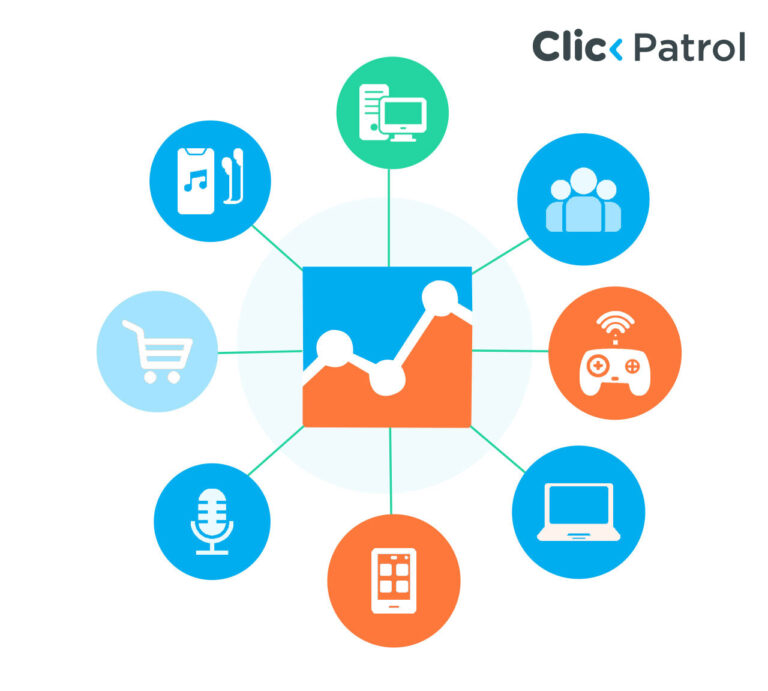
Understanding Pixel Stuffing
Abisola Tanzako | Aug 21, 2024

Table of Contents
The digital advertising space is known to be where every click and impression counts for the billions of dollars changing hands annually, making it a target for fraudsters. Fraudulent activities pose a significant challenge in digital advertising. One such practice is deceptive advertising, known as “pixel stuffing,” which has emerged as a concern for advertisers, publishers, and consumers.
It involves the fraudulent insertion of a tiny pixel around 1×1 in size, invisible to the naked eye, within an ad placement. This pixel insertion does not make the ad viewable to users but has significant consequences for digital advertising. This article will explore the meaning of pixel stuffing, how it works, its motivations and impacts, and how to identify and mitigate this form of ad fraud.
What is pixel stuffing?
Pixel stuffing, also known as ad stuffing or ad hiding, is a fraudulent technique used in digital advertising in which ads are multiplied, displayed in small spaces, often as small as 1×1 pixels, or compressed into a single tiny pixel that is invisible to human viewers. These hidden ads are then loaded onto a webpage, run alongside legitimate ads, and generate invalid impressions, which advertisers unknowingly pay for.
Pixel stuffing can artificially inflate the number of ad views or clicks, charging advertisers more than what occurred. Despite their invisible nature, these “stuffed” ads are still counted as impressions by ad networks and tracking systems. This allows fraudsters to earn revenue from these invisible ads while advertisers unknowingly pay for impressions that never truly existed.
This practice takes advantage of the automated nature of programmatic advertising, where ads are bought, sold, and placed in real-time across millions of websites. Pixel stuffing can be used to target cost-per-mille (CPM), cost-per-click (CPC), and cost-per-lead (CPL) campaigns, where fraudsters can automatically trigger clicks or leads.
How does pixel stuffing work?
Pixel stuffing works by faking the technical details of digital ad placements, which often start with a fraudulent website. The fraudulent actors responsible for this kind of ad fraud join ad exchanges and place ads or whole websites inside 1×1 pixel frames. Integrating these many ads into a single pixel on the page renders the ads invisible to viewers.
Pixel stuffing is a way to benefit from invalid impressions and exaggerate a campaign’s performance. To prevent pixel stuffing and ensure fair and accurate ad distribution, organizations need expert solutions that identify and stop fraudulent behavior.
What are the motivations for pixel stuffing?
The primary motivation for pixel stuffing is often financial. By generating several fake impressions, fraudsters can significantly inflate their ad revenue. Here are some specific motivations:
1. Competitive advantage: Some unethical publishers or ad networks use pixel stuffing to gain an unfair advantage over competitors. Artificially inflating their traffic and impression numbers can make them look more attractive to advertisers and potentially secure larger advertising budgets.
2. Meeting contractual obligations: Sometimes, publishers resort to pixel stuffing to fulfill contractual obligations with advertisers. If they’ve promised a certain number of impressions but are falling short, pixel stuffing can be seen as a way to meet these commitments.
3. Manipulating performance metrics: Some entities artificially use pixel stuffing to improve performance metrics.
4. Covering up poor performance: In cases where genuine ad performance is poor, pixel stuffing might obscure these issues. Flooding the system with fake impressions can hide real performance problems.
5. Testing and exploiting system vulnerabilities: Some pixel-stuffing activities may be motivated by testing and exploiting vulnerabilities in ad-serving systems or fraud detection mechanisms. This could be driven by curiosity, a challenge, or the intent to develop more sophisticated fraud techniques.
6. Low risk, high reward perception: The perceived low risk of detection and the potential for high financial rewards motivate some individuals or organizations to engage in pixel stuffing. The complexity of the digital advertising space can make it challenging to trace and prosecute such fraud.
7. Pressure to perform: In highly competitive advertising markets, publishers or ad networks may be under intense pressure to deliver results. This pressure can sometimes lead to unethical practices like pixel stuffing, which is a misguided attempt to meet performance expectations.
8. Lack of transparency and accountability: The often hidden nature of the digital advertising supply chain can motivate pixel stuffing. The lack of clear accountability and numerous intermediaries can create an environment where such fraudulent activities are considered low-risk.
What are the impacts of pixel stuffing on ad campaigns?
Pixel stuffing can have a significant impact on ad campaigns. It also results in substantial financial losses and wasted resources on ineffective advertising channels. Here are some additional impacts:
1. Inflated impression counts: The most direct effect of pixel stuffing is the artificial inflation of impression numbers. These fake impressions skew campaign metrics, giving advertisers a false sense of their ad’s reach and performance. This misrepresentation can lead to misguided strategic decisions based on inaccurate data.
2. Wasted ad spend: As advertisers often pay per impression, pixel stuffing results in significant financial losses. Budgets are depleted on ads that were never viewed by actual users, reducing ad campaigns’ overall efficiency and ROI.
3. Distorted performance metrics: Beyond impressions, pixel stuffing can distort key performance indicators (KPIs) such as click-through rates (CTR) and conversion rates. With an inflated number of impressions, these rates appear lower than they are, potentially leading advertisers to make incorrect assumptions about ad effectiveness.
4. Compromised targeting efforts: Pixel stuffing can interfere with audience targeting strategies. The flood of fake impressions may diminish the data used for audience segmentation and retargeting, making it harder to reach the intended audience effectively.
5. Skewed A/B testing results: For advertisers running A/B tests to optimize their campaigns, pixel stuffing can severely compromise the validity of test results. The influx of fake impressions can mask performance differences between ad variations, leading to misguided optimization decisions.
6. Damaged brand reputation: If advertisers unknowingly participate in pixel-stuffing schemes, they risk associating their brand with fraudulent practices, damaging their reputation among consumers, partners, and the industry.
7. Ineffective frequency Capping: Frequency capping, which limits how often an ad is shown to a user, becomes ineffective with pixel stuffing. The flood of fake impressions can quickly exhaust the frequency cap, preventing real users from seeing the ad the intended number of times.
8. Misallocation of resources: Advertisers might misallocate resources based on inflated performance data from pixel-stuffed campaigns. They may invest more in seemingly high-performing (but fraudulent) placements while neglecting genuinely effective channels.
How to detect pixel stuffing
Detecting pixel stuffing can be challenging due to its technical nature, but there are several methods that advertisers and ad verification services use:
1. Viewability measurement: Implement advanced viewability measurement tools that can detect the size and position of ad units on a page. These tools can identify abnormally small ad units or those positioned outside the viewable area of the page.
2. Ad placement verification: Use third-party verification services that analyze the context and placement of ads. These services can flag suspicious placements, including those too small to be visible or hidden within the page structure.
3. Traffic pattern analysis: Monitor traffic patterns for unusual spikes or inconsistencies. Pixel stuffing often generates a high volume of impressions from a single source. Look for sources with an abnormally high impression-to-user ratio.
4. Bot detection: Employ sophisticated bot detection technologies. Pixel stuffing often relies on automated traffic to generate impressions. Advanced bot detection tools can identify invalid traffic patterns associated with this fraud type.
5. Domain analysis: Regularly audit the domains where your ads appear. Pixel stuffing often occurs on low-quality or fraudulent websites. Look for sites with suspiciously high ad-to-content ratios or little to no organic traffic.
6. Engagement metrics scrutiny: Analyze user engagement metrics closely. Pixel-stuffed ads will show extremely low or zero engagement rates. Look for placements with high impression counts but negligible clicks, mouse-overs, or other interactions.
7. Cross-device verification: Implement cross-device verification checks. Legitimate ads should show consistent performance across different devices. If you see high impression counts on one type of device (e.g., desktop) but not on others (e.g., mobile), this could indicate pixel stuffing.
8. Ad stack analysis: Regularly audit your ad stack and supply chain. Pixel stuffing often occurs through complex chains of redirects and nested iframes. Use tools to analyze the full ad delivery path to identify suspicious intermediaries or unnecessary redirects.
How to mitigate pixel stuffing
Mitigating pixel stuffing requires a multi-faceted approach involving technology, policy, and industry cooperation. Here are some strategies to reduce this form of ad fraud:
- Implement advanced viewability measurement: Utilize sophisticated viewability measurement tools to detect ad units’ size, position, and rendering. These tools should be capable of identifying abnormally small ad spaces or those positioned outside the viewable area of a webpage. By setting strict viewability entry and only paying for ads that meet these criteria, advertisers can significantly reduce the impact of pixel stuffing.
- Employ third-party verification services: Engage reputable third-party verification services specializing in ad fraud detection. The services use advanced algorithms and machine learning to analyze ad placements, traffic patterns, and user behavior.
- Utilize pre-bid filtering: Implement pre-bid filtering mechanisms that screen out potentially fraudulent inventory before bidding. This proactive approach involves creating and regularly updating blacklists of suspicious domains, IP addresses, and ad placements known for pixel stuffing.
- Conduct regular supply path audits: Perform thorough and regular audits of your entire supply path. This includes examining all intermediaries, partners, and technologies in your ad delivery process. Look for unnecessary redirects, hidden iframes, or other suspicious elements that could indicate pixel stuffing.
- Prioritize direct relationships: Build direct relationships with reputable publishers and ad networks. While this approach may limit reach compared to open programmatic buying, it provides greater control and transparency over where your ads appear. Direct relationships allow for a more detailed evaluation of inventory sources and make it easier to hold partners accountable for the quality of their ad placements.
- Implement sophisticated bot detection: Invest in advanced bot detection technologies such as ClickPatrol to identify non-human traffic associated with pixel stuffing. These tools use a combination of behavioral analysis, machine learning, and fingerprinting techniques to distinguish between genuine user interactions and automated bot activity.
- Use data analytics for pattern recognition: Utilize advanced data analytics to identify patterns indicative of pixel stuffing. Look for anomalies such as unusually high impression-to-user ratios, sudden spikes in impression volume from specific sources, or consistent patterns of zero engagement. You can quickly identify and address potential pixel-stuffing activities by establishing baseline metrics for normal ad performance and regularly analyzing deviations from these norms.
- Educate and collaborate within the industry: Participate in industry-wide efforts to combat ad fraud, including pixel stuffing. By fostering a culture of collaboration and knowledge-sharing, the sector can become more resilient to pixel stuffing and other forms of ad fraud.
Tackling the challenge of pixel stuffing
Pixel stuffing poses a significant challenge to the digital advertising industry, leading to distrust and the diversion of valuable resources from legitimate publishers and advertisers; stakeholders in the digital advertising landscape must remain vigilant and proactive. By understanding the mechanics of pixel stuffing and implementing advanced detection and prevention measures, the industry will be led toward a more trustworthy and effective digital advertising environment.
Advertisers must demand greater visibility in their ad placements, publishers must prioritize the quality of their ads over quantity, and technology providers must continue to innovate in fraud detection and prevention. Combating pixel stuffing and other ad fraud requires a collective effort.
FAQs
Q1: Is pixel stuffing illegal?
The legality of pixel stuffing varies by jurisdiction. While it’s generally considered unethical and a violation of advertising platform policies, the specific legislation directly addressing it is limited. It may fall under broader laws against fraud or deceptive practices.
Q2: Can small publishers be victims of pixel stuffing?
Yes, small publishers can fall victim to pixel stuffing if they use third-party ad networks or plugins that engage in fraudulent practices. It’s important for all publishers, regardless of size, to carefully vet their advertising partners.





